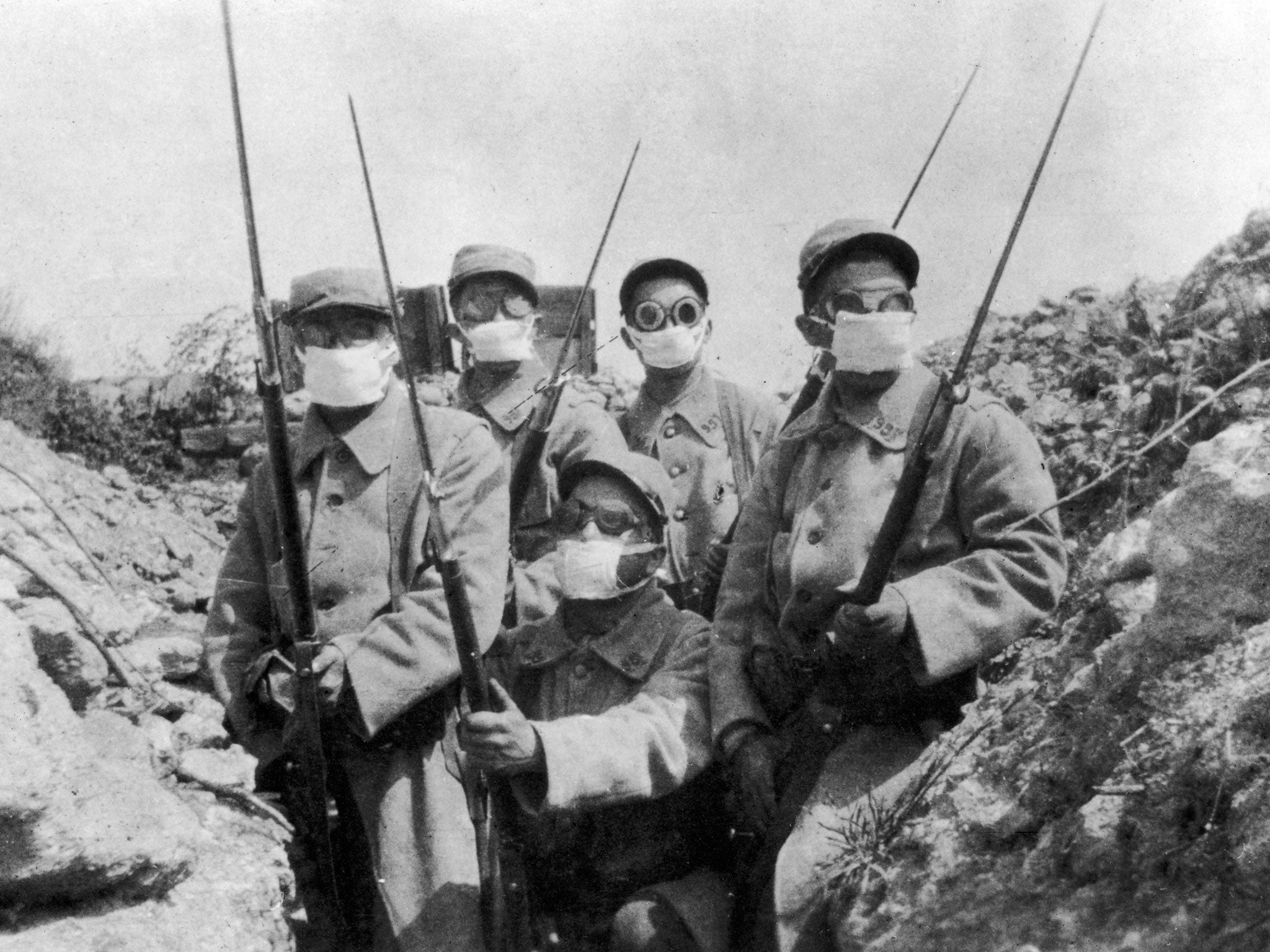Chemical weapons: The day the first poison gas attack changed the face of warfare forever
Since 2005, an annual Day of Remembrance for all Victims of Chemical Warfare has been held on April 29

Your support helps us to tell the story
From reproductive rights to climate change to Big Tech, The Independent is on the ground when the story is developing. Whether it's investigating the financials of Elon Musk's pro-Trump PAC or producing our latest documentary, 'The A Word', which shines a light on the American women fighting for reproductive rights, we know how important it is to parse out the facts from the messaging.
At such a critical moment in US history, we need reporters on the ground. Your donation allows us to keep sending journalists to speak to both sides of the story.
The Independent is trusted by Americans across the entire political spectrum. And unlike many other quality news outlets, we choose not to lock Americans out of our reporting and analysis with paywalls. We believe quality journalism should be available to everyone, paid for by those who can afford it.
Your support makes all the difference.On 22 April 1915, less than nine months into the First World War, the German army unleashed a terrifying new weapon that changed the face of warfare forever.
At around 5pm, across a 6km front, troops released almost 6,000 metal cannisters – 168 tonnes – of poisonous chlorine gas towards trenches held by French and Algerian forces near the Belgian city of Ypres.
The results were devastating. A noxious yellow cloud enveloped the allied positions, and within moments 5,000 soldiers were dead, with another 10,000 injured, as the gas ate into their unprotected lungs.

Field Marshal Sir John French, Commander in Chief of the British force at Ypres, described the attack in his dispatches from the front line. "It was at first impossible for anyone to realise what had actually happened," he wrote.
"The smoke and fumes hid everything from sight, and hundreds of men were thrown into a comatose or dying condition, and within an hour the whole position had to be abandoned."
Poisons and chemicals had been a part of war in some form for centuries, while tear gas had been employed by both French and German forces during the early months of the conflict. However, the use of poison gas in warfare had been prohibited by the Hague Conventions of 1899 and 1907.

Because of this, to Sir John French the Germans' use of Chlorine was "a cynical and barbarous disregard of the well-known usages of civilised war". But on 25 September 1915, less than three months after French's dispatches were published, the British army launched their first such attack.
By the end of the war in 1918 the allies had used more tonnes of gas than the Germans. In total, chemical weapons killed nearly 100,000 people during the conflict, wounding an estimated one million.
As gas masks were distributed, which largely negated the effects of chlorine, the chemicals used became more sophisticated, first with phosgene and then mustard gas, which burned the skin as well as the lungs.
The horrific physical and psychological effects of this new type of warfare would form the basis for some of the most enduring, if harrowing, artistic works to emerge from the conflict.

John Singer Sargent's 1919 painting "Gassed" remains one of the war's most iconic images, while Wilfred Owen's poem "Dulce et Decorum Est" depicts the panic of a chlorine attack: "Gas! GAS! Quick, Boys!"
The use of chemical and biological weapons was banned after the First World War. However, these first gas attacks had already helped to lay the foundation of a new type of indiscriminate, industrial killing.
Mustard gas was used by the Italians in Abyssinia in 1936 and, although neither side deployed gas in open combat during World War Two, gassing vans and the chambers of the Nazi concentration camps helped facilitate the mass-murder of the Holocaust.
Despite the ban being renewed in 1972 and 1993 the use of chemical weapons has persisted, from the mustard gas employed by Iraq during Saddam Hussein's reign of terror to the alleged use of the nerve agent sarin during the civil war in Syria.
Isis have repeatedly been accused of employing chemical weapons, reportedly using mustard gas against Bashar al-Assad’s forces in battles at the crucial Deir ez-Zor airport in eastern Syria earlier this month.
In February James Clapper, the US Director of National Intelligence, cited 'numerous allegations' against the terror group to conclude that they are "using chemicals as a means of warfare".
Since 2005, an annual Day of Remembrance for all Victims of Chemical Warfare has been held on April 29. The event, chosen because it marks the day the Chemical Weapons Convention was signed in 1997, is officially recognised by the UN.
The Organization for the Prohibition of Chemical Weapons assembled in Ypres last year to commemorate not just the 100th anniversary of the first attack in 1915, but all victims of chemical warfare since.
Buglers played the "Last Post" and Ahmet Uzumcu, the organisation's Director General, laid a wreath at the Menin Gate Memorial to the missing.
Join our commenting forum
Join thought-provoking conversations, follow other Independent readers and see their replies
Comments